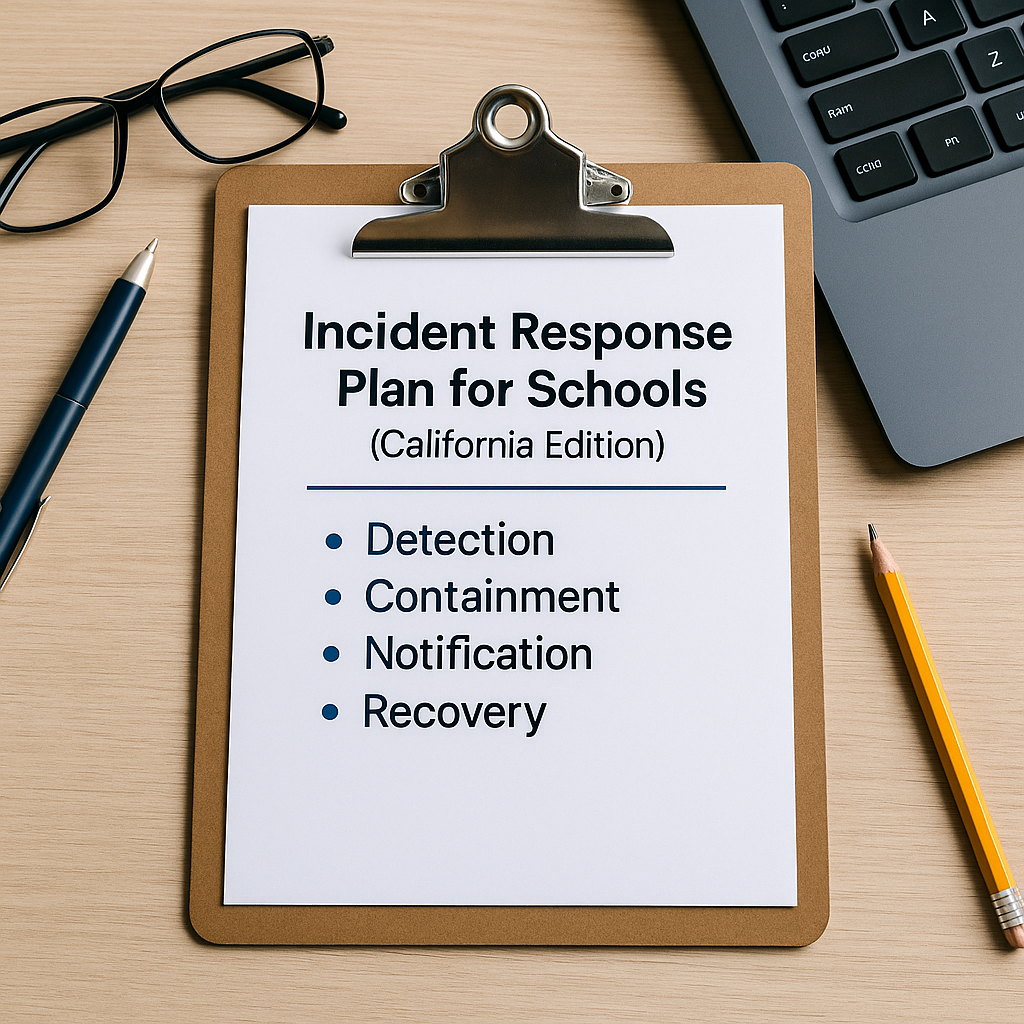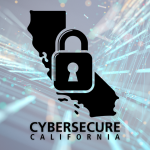
A student clicks a bad link. A teacher reports weird login activity. Your SIS goes offline right before state testing.
Now what?
This page helps California K–12 districts create a clear, repeatable, and realistic cyber incident response plan — even if you don’t have a full-time CISO or on-call legal team.
🚨 What Counts as a Cyber Incident?
- Phishing emails that lead to compromised accounts
- Malware or ransomware attacks
- Unauthorized access to student or staff data
- System outages tied to suspicious activity
- Lost/stolen devices with sensitive data
🧩 The 5-Part Response Framework
1. Detect & Alert
- Encourage all staff to report strange emails, logins, or system behavior
- Set up a central reporting inbox (e.g., security@district.org)
- Use tools that alert on suspicious logins or file access
2. Contain
- Disable affected accounts or isolate impacted devices
- Change passwords and revoke access tokens if needed
- Coordinate with your MSP or IT team to contain spread
3. Assess Impact
- What systems are affected?
- Was data accessed or exfiltrated?
- Are students/staff directly impacted?
4. Notify & Escalate
- Notify key internal contacts (IT lead, site admin, superintendent)
- Determine if law enforcement or legal counsel is needed
- If student data is compromised, prepare to notify families
5. Recover & Review
- Restore systems from clean backups
- Log and document every action taken
- Update your incident response plan based on lessons learned
🧠 Who Needs to Know What (And When)?
District IT Staff:
- Lead containment and technical recovery
- Document timelines and technical details
School Leadership (Principals, Supers):
- Coordinate communication and decision-making
- Reassure staff, board, and community
Frontline Staff:
- Report suspicious activity
- Know who to contact and what not to do (don’t delete suspicious emails!)
Families (if needed):
- Transparent updates if student data is involved
- Offer steps for monitoring or password resets
🛠 Tools That Help
- Incident response worksheet (coming soon)
- Log sheet template for response actions
- MSP support with forensic investigation
- Crisis communication templates for internal/external messaging
✅ Minimum Plan Components
Your incident response plan should include:
- Key contacts and roles
- Steps for common scenarios (phishing, ransomware, device theft)
- Communication flowchart
- Recovery checklist
- Location of backups and documentation logs
💡 Final Word
You don’t need to be perfect. You need to be prepared.
A simple, practiced plan beats a 50-page policy no one can follow.
Cybersecure California is here to help your district respond with clarity, confidence, and community trust — even under pressure.
Start with this guide. Make it yours. And rehearse before it’s real.

